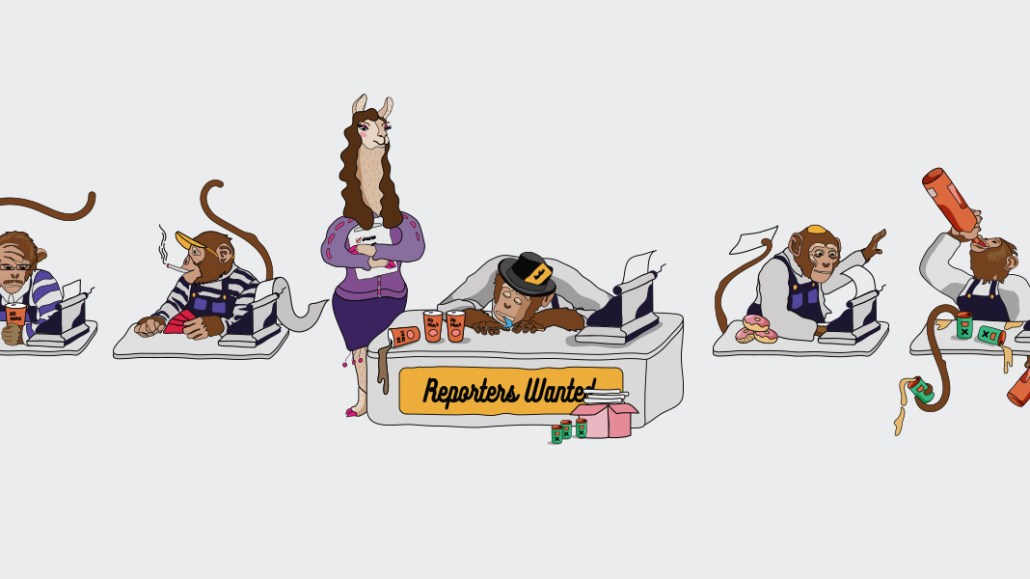Register by Jan 13 to save on passes and connect with marketers from Uber, Bose and more

With publishers increasingly prioritizing subscriptions as a revenue stream, newsrooms are slowly evolving to nudge reporters into thinking more about sales.
At The Dallas Morning News, managers changed the default display setting in their analytics provider Parsely so reporters could track returning visitors rather than pageviews. At Tribune Publishing, weekly meetings of editors with reporters now focus on the stories subscribers read and which pieces contribute the most to readers’ signing up for digital subscriptions. Business Insider reporters whose work spurs a minimum number of BI Prime subscriptions reap quarterly bonuses, according to one source familiar with the matter. A spokesperson from Business Insider said the bonuses are meted out using a mixture of qualitative and quantitative goals.
These and other changes are influencing exactly how reporters do their jobs, too. Dan McGowan, a Boston Globe reporter who is part of the team expanding the paper’s Rhode Island coverage, said he still focuses on reporting the important stories. But he also voluntarily spends time promoting the work of his team directly to potential subscribers.
“I do find myself having to be a little bit of a salesman, McGowan said.
A growing number of publications have even managed to coax editors and reporters into thinking more about how their work can drive subscriptions.
“People really struggle with [the idea that] the newsroom is this intractable place filled with cranks who won’t change,” said David Grant, a program manager at the Facebook Journalism Project’s accelerator program. “But show people an opportunity, and they will pursue it,” added Grant, previously an associate publisher for The Christian Science Monitor.
Many of these changes resulted from publishers shifting their priorities from one metric to another. In 2015 when The Dallas Morning News began focusing on increasing the number of digital subscriptions, managers circulated in the newsroom a report that described the challenges of the digital advertising market, including the declining cost per thousand that publishers can charge for advertising. Managers explained why employees should prioritize retaining returning readers and drawing new digital subscribers, rather than just attracting pageviews, said Nicole Stockdale, the Dallas Morning News director of digital strategy.
After circulating that report, the Dallas Morning News set goals for each reporter to boost reader engagement and new subscriptions 5% to 20%. These reporters, like their counterparts at The Seattle Times, faced no penalties for missing their marks. This past year about two-thirds of Dallas Morning News employees met their goals, Stockdale said.
Because many managers are still learning how to best to measure and account for subscriber growth, few publishers have penalized reporters for failing to hit their targets. Starting this year, staffers at Tribune Publishing, will have access to an American Press Institute tool that scores each story according to four variables.
The tool will tally each story’s number of pageviews and level of engagement, as well as how many existing subscribers read it and the number of new digital subscriptions it attracted, said Idalmy Carrera-Colucci, senior director of editorial operations at Tribune Publishing, which includes the Daily News, Chicago Tribune and The Baltimore Sun.
Gathering those metrics is part of a benchmarking project, Carrera-Colucci said, adding that eventually Tribune Publishing might adopt improvement goals for staffers, though no timetable has been set. The company’s goal for right now is to better understand how encouraging reporters to meet certain metrics affects the journalism as well as subscriber growth.
“If our newsrooms felt like this was a path to eventually weaponize data and use it against them, they were never going to buy in,” she added.
The focus on subscriber growth has prompted reporters at some publications to emulate their successful peers. After Chicago Tribune experienced positive results from posting stories about all the benefits readers can draw from a digital subscription, writers at other Tribune Publishing titles followed suit. And reporters and editors regularly compare stories produced by different writers on the same desk to tease out why one piece led to more subscriptions than another.
“No one is shy about jumping on and stealing good ideas,” Carrera-Colucci said. “And that’s the hope. This stuff very quickly spreads within the company.”
Prioritizing subscriptions over pageviews requires a change in time management and storytelling, too. When Matt Pressberg moved from advertising-focused The Wrap to fully paywalled The Information, he found himself altering the way he way he conceived of stories. Instead of reporting a scoop by breaking it into three or four stories published over several days, he found himself taking more time to interview people, he said.
“It was sort of a challenge for me at first,” Pressberg said.
Some reporters have taken it upon themselves to learn new skills so they can help stimulate subscription growth. The Globe’s McGowan, who creates the daily newsletter Rhode Map, said he has had to learn how to promote it, within his prose and on external channels.
While he is not required to do so, McGowan assigned himself this task, he said, noting that bigger, more successful media companies seem to be continuously promoting their subscriptions. The Times’s hit podcast “The Daily” regularly promotes the value of a Times subscription, he observed.
“If ‘The Daily’ has to do it, then I don’t think Rhode Map is above it,” McGowan said.
Note: An earlier version of this story said Business Insider rewards its bonuses monthly. They are rewarded quarterly.
More in Media

Media Briefing: Here’s what media execs are prioritizing in 2026
Media executives enter 2026 weathered by disruption, but refocused on AI revenue, brand strength and video and creator opportunities.

Why publishers are building their own creator networks
Publishers are forming creator networks to regain control, combat traffic declines, and reach audiences shifting toward influencers.

The accidental guardian: How Cloudflare’s Matthew Prince became publishing’s unexpected defender
Cloudflare’s day job is fending off botnets and nation-state cyberattacks, not debating how Google and other AI firms crawl publisher sites.








